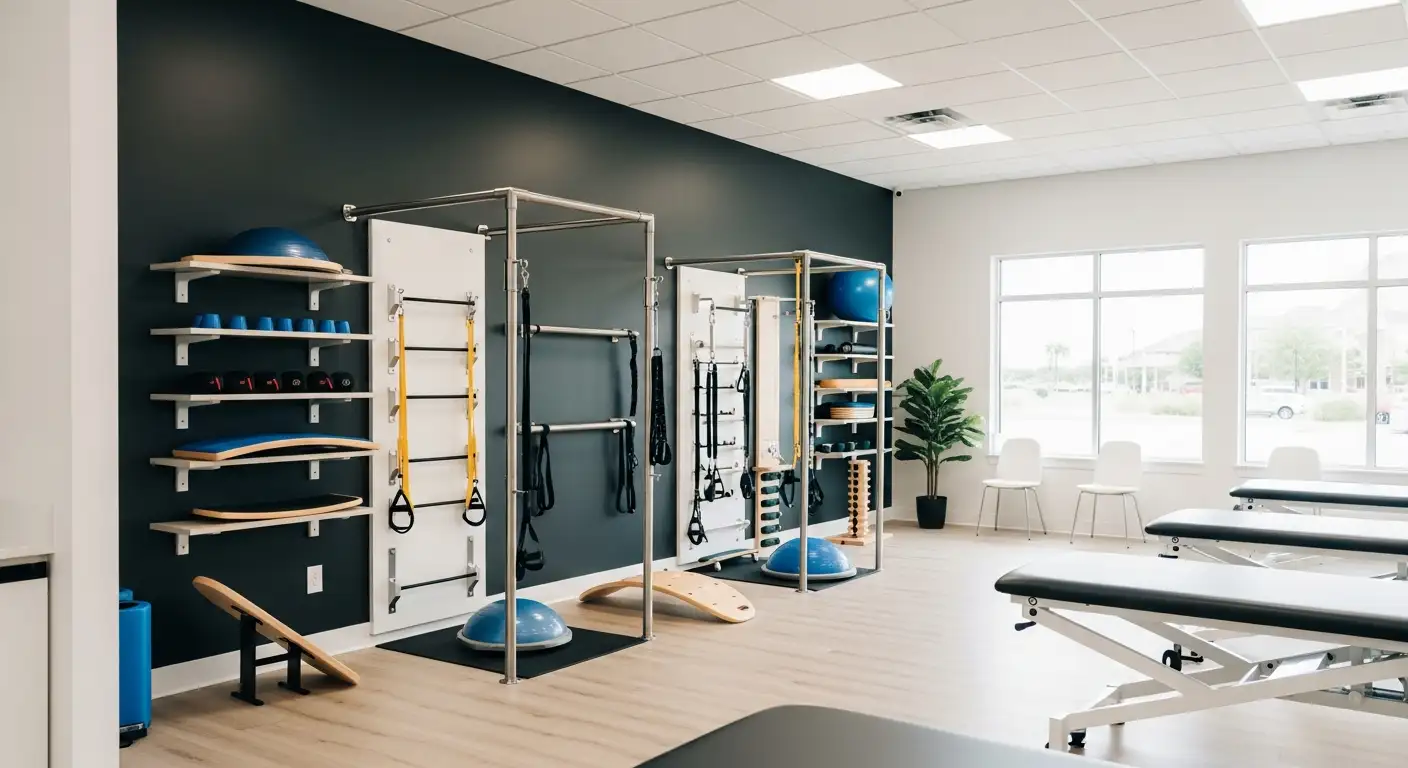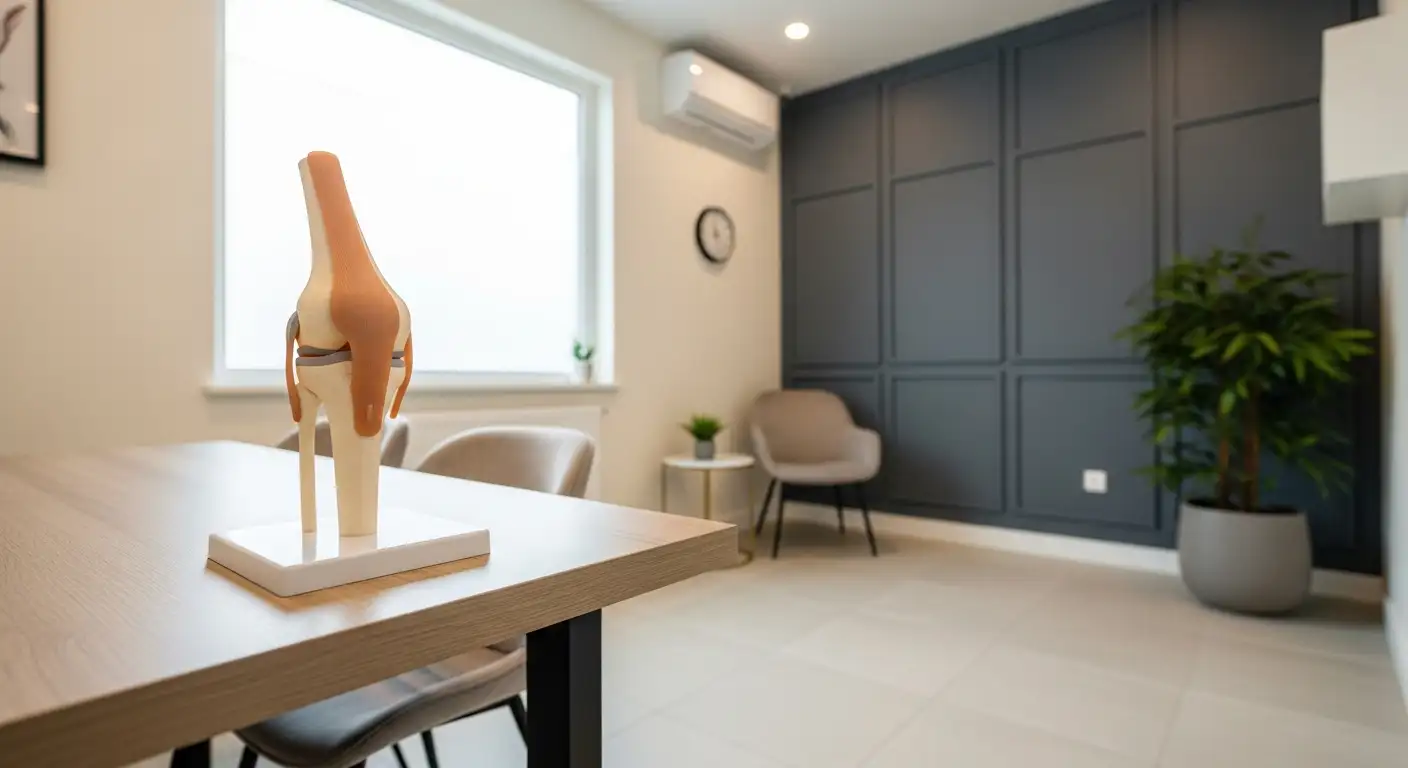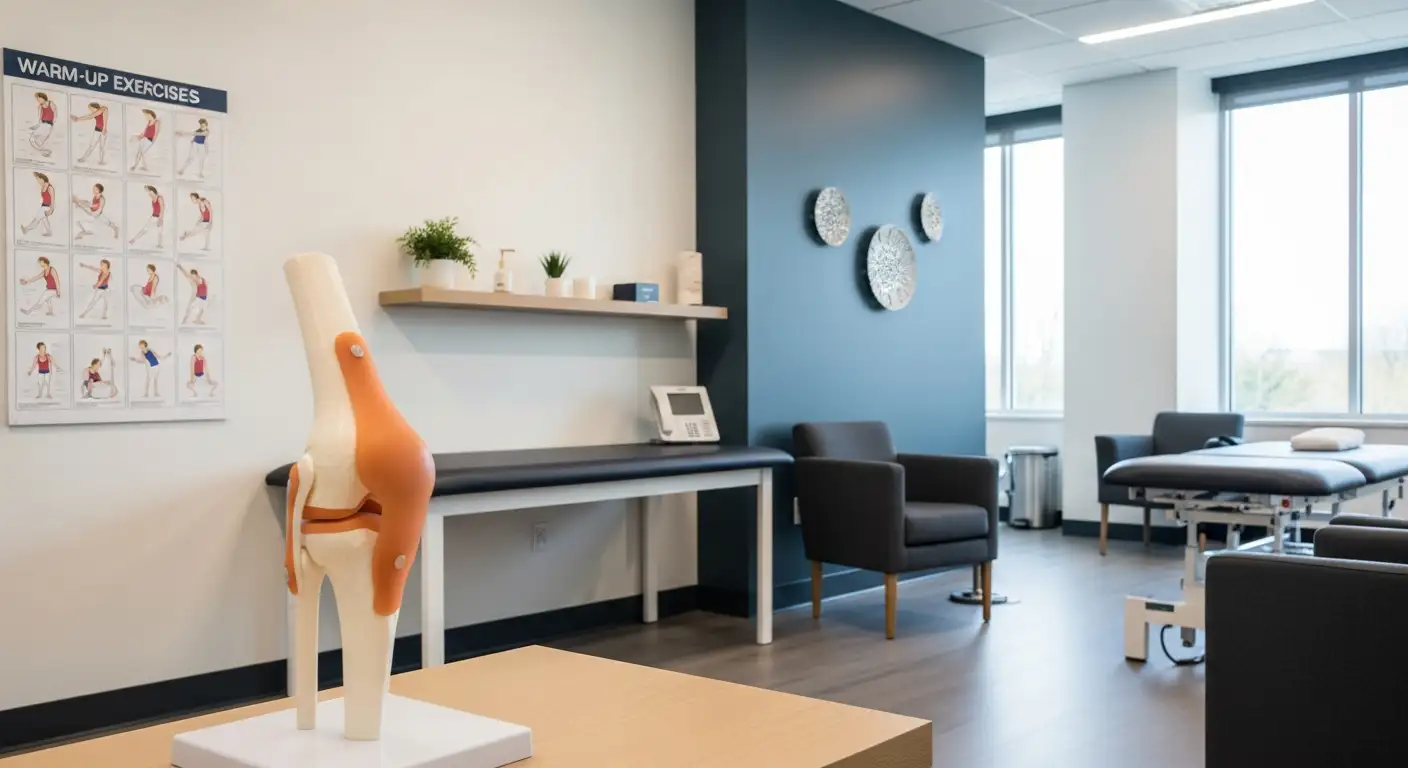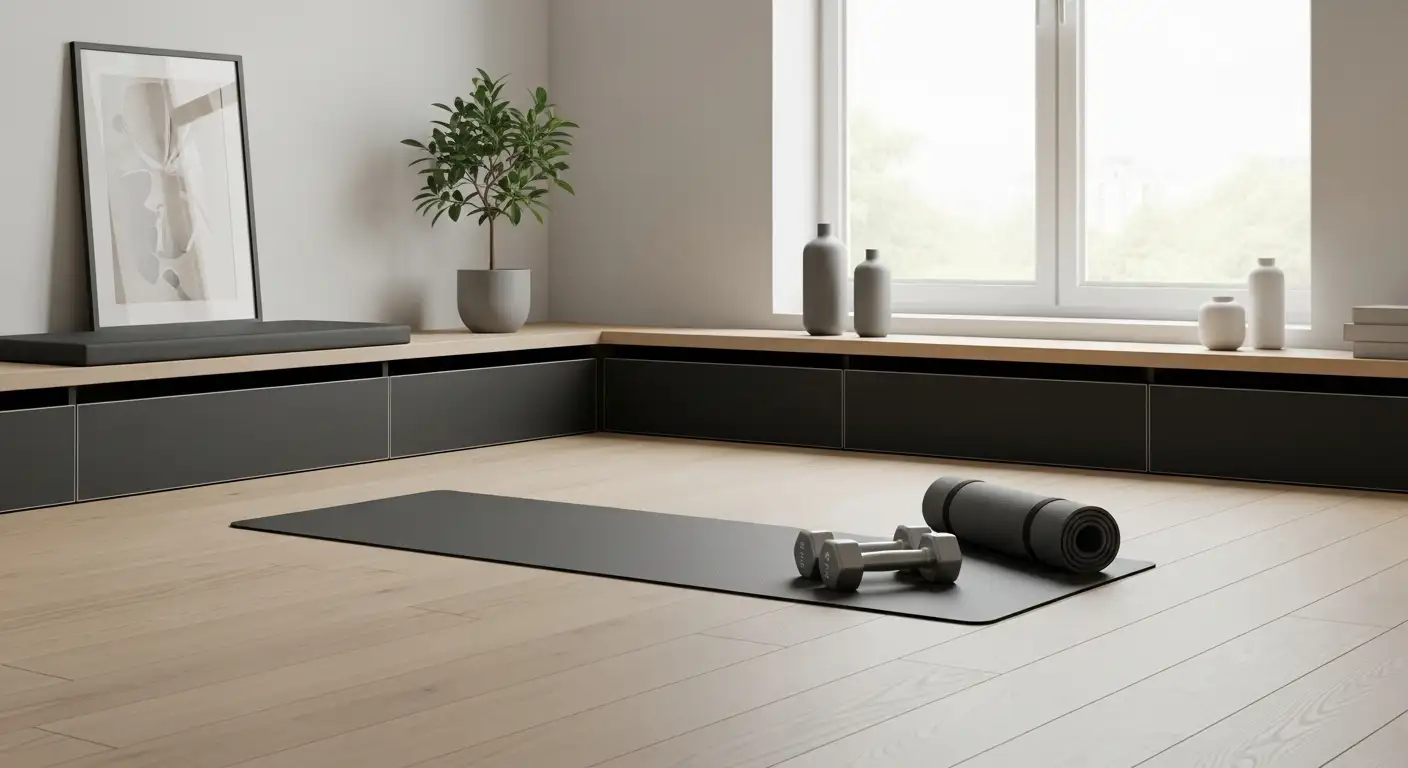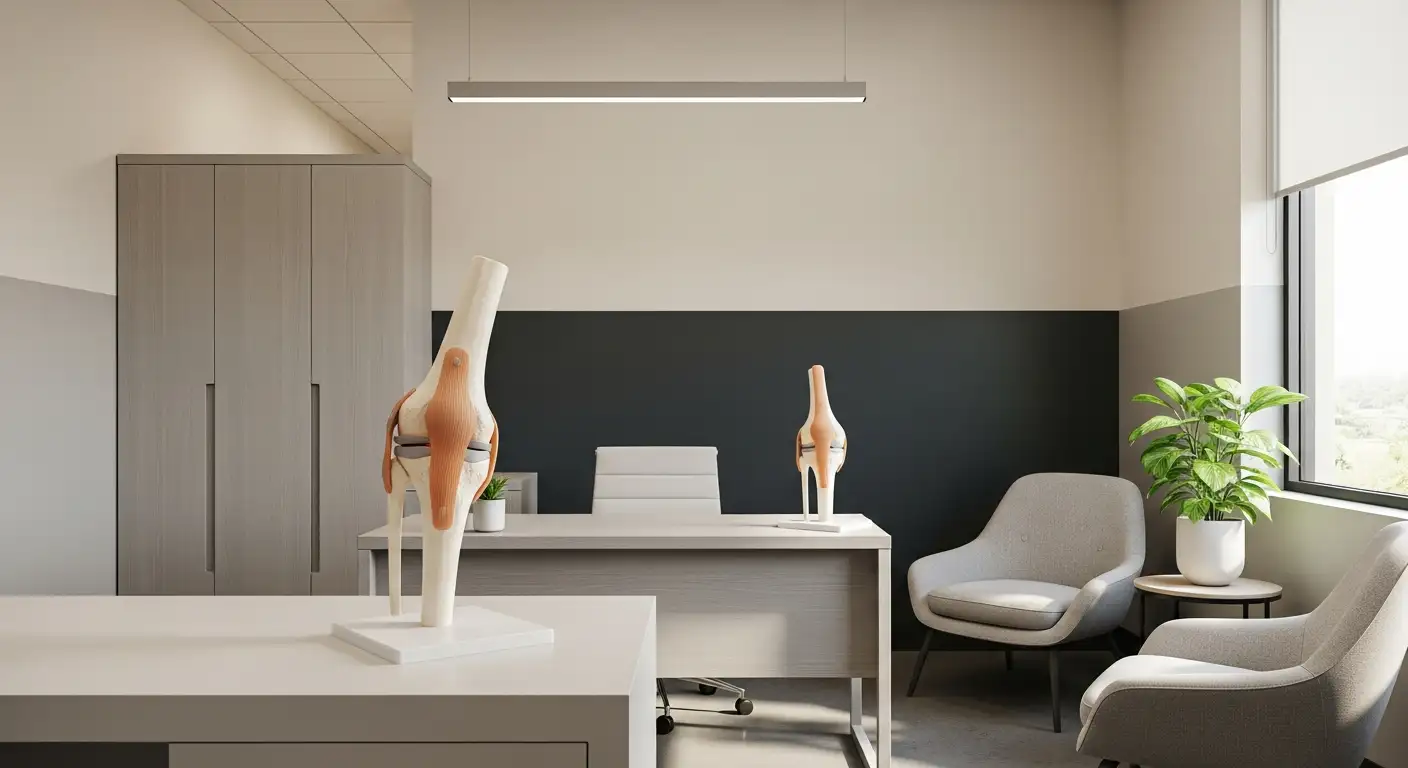Understanding Knee Pain
Knee pain can be a debilitating issue that restricts mobility and impacts the quality of life. A particularly concerning type of knee pain is a sharp pain in the knee cap when bending. This article aims to provide an understanding of the anatomy of the knee and the potential causes of knee pain.
Anatomy of the Knee
The knee is a complex joint that acts as the junction between the thigh bone (femur), shin bone (tibia), and the kneecap (patella). It is surrounded by a number of ligaments, tendons, and muscles, which allow for a wide range of motion. The patellar tendon, in particular, plays a crucial role in the bending and straightening of the knee. This tendon connects the kneecap to the shin bone and is often associated with a type of knee pain known as patellar tendonitis, or jumper's knee.

Causes of Knee Pain
Sharp pain in the knee cap when bending can be due to a variety of causes. One of the most likely reasons for this type of pain is patellar tendonitis. This condition results from overuse or repetitive stress on the patellar tendon, leading to pain when climbing stairs, kneeling, or squatting.
However, knee pain is not solely linked to patellar tendonitis. Conditions such as patellofemoral pain syndrome, meniscus tears, osteoarthritis, or a Baker's cyst can also cause knee pain. Activities like running, squatting, or jumping can trigger or worsen these conditions.
Furthermore, knee pain can be caused by conditions like chondromalacia patella, bursitis, and runner's knee, leading to discomfort when kneeling, walking up stairs, or squatting.
In some instances, sharp pain in the kneecap when bending could be attributed to mechanical problems, arthritis, or specific kinds of exercises.
These potential causes highlight the importance of receiving a proper diagnosis from a healthcare professional to determine the exact cause of the pain. Understanding the root cause of knee pain is the first step towards finding the appropriate treatment and managing the condition effectively.
Common Conditions Causing Knee Pain
Experiencing a sharp pain in the knee cap when bending can be distressing and debilitating. This discomfort can be due to various conditions, such as Patellar Tendonitis, Patellofemoral Pain Syndrome, and Meniscus Tears.
Patellar Tendonitis
Patellar Tendonitis, also known as Jumper's Knee, is a common condition that can result in a sharp pain in the kneecap area when climbing stairs, kneeling, or squatting. This condition arises from overuse or repetitive stress on the patellar tendon, which connects the kneecap to the shinbone.
Patellar Tendonitis is often seen in athletes who are engaged in jumping sports, such as basketball and volleyball. However, individuals with occupations or hobbies that involve repetitive knee bending can also develop this condition.
Patellofemoral Pain Syndrome
Another condition that could cause a sharp pain in the knee cap when bending is Patellofemoral Pain Syndrome, sometimes also known as Runner's Knee [4]. This condition is characterized by pain around the front of the knee and kneecap. It is usually caused by overuse, injury, or other factors that put extra stress on the knee, such as obesity or misalignment.
Patellofemoral Pain Syndrome can be triggered or worsened by activities like running, squatting, or jumping. Patients with this condition may experience increased pain when walking up or down stairs, squatting, or after sitting for extended periods.
Meniscus Tears
Meniscus tears are another common cause of sharp knee pain when bending. The meniscus is a piece of cartilage that provides a cushion between your thighbone and shinbone. A tear in this cartilage can cause pain, swelling, and stiffness in the knee.
Meniscus tears can occur due to a sudden twist or turn, often while the foot is planted and the knee is bent. They are a common injury in sports but can also occur due to aging or arthritis.
Each of these conditions has unique characteristics and can be influenced by a variety of factors. It is essential to consult with a healthcare professional for a proper diagnosis and treatment plan if you are experiencing sharp pain in the knee cap when bending.
Diagnosing Sharp Pain in Kneecap
Identifying the cause of a sharp pain in the knee cap when bending is vital for determining the most effective treatment plan. This is where healthcare professionals come into play.
The Role of Healthcare Professionals
If you experience sharp pain in the knee cap when bending, seeking medical evaluation from a healthcare provider is crucial to receive an accurate diagnosis and an appropriate treatment plan tailored to your specific condition. As suggested by the Mayo Clinic, treatment options may vary depending on the specific condition identified, ranging from rest and physical therapy to surgical interventions.
It's essential to consult a medical professional if you experience sharp knee pain during bending to determine the root cause and develop an appropriate treatment plan. They are equipped with the knowledge and tools to assess your condition, understand the nature and intensity of your pain, and guide you towards a suitable treatment plan.
Diagnostic Tests
To diagnose the cause of sharp knee pain when bending, healthcare professionals may utilize a variety of diagnostic tests. These can include:
- Physical Examination: This typically involves the healthcare professional manually examining the knee, assessing range of motion, and checking for signs of swelling or tenderness.
- X-Rays: X-rays can provide images of the bones within the knee, and can help identify fractures or other abnormalities that might be causing pain.
- MRI: An MRI can provide a more detailed image of the soft tissues within the knee, and can be particularly useful for identifying issues with the ligaments, tendons, or menisci.
- Ultrasound: This imaging technique can be used to identify issues with the soft tissues in real-time, such as the movement of the kneecap when bending.
Remember, it is crucial to consult with a healthcare professional if the pain persists or worsens, as they can provide a tailored treatment plan to address the underlying cause of the knee pain when bending. Seeking medical advice is recommended for individuals experiencing sharp knee cap pain when bending, especially if the pain is persistent, accompanied by swelling or warmth, or limiting movement.
Managing and Treating Knee Pain
When it comes to managing and treating sharp pain in the kneecap when bending, it's crucial to have a proper diagnosis as different conditions require different treatments. Both non-surgical and surgical interventions are available depending on the nature and severity of the condition.
Non-Surgical Treatment Options
Non-surgical treatments are often the first step in managing knee pain. This can involve a combination of physical therapy, rest, ice, and proper stretching, which are common methods used to alleviate the discomfort associated with these conditions.
Strengthening exercises focusing on the quadriceps, hamstrings, and hip muscles can help stabilize the knee joint and alleviate pain when bending. A physical therapist can recommend exercises tailored to individual needs and conditions.
Initial self-care measures for sharp knee cap pain when bending may include rest, ice, compression, elevation, and over-the-counter pain relievers.
However, it is crucial to consult with a healthcare professional if the pain persists or worsens, as they can provide a tailored treatment plan to address the underlying cause of the knee pain when bending.
Surgical Interventions
In some cases, surgical intervention may be necessary to address severe knee pain when bending, especially if conservative treatments have not provided relief. Conditions causing sharp pain in the kneecap when bending such as injuries from sports or physical activities, osteoarthritis, or patellar tendinitis might necessitate such interventions [5].
Injuries to the knee, such as a dislocated kneecap, torn ligament, or fractures, can lead to sharp pain when bending the knee cap. These injuries can occur during sports or physical activities, accidents, or falls and might require surgical measures to correct [5].
Consulting with an orthopedic surgeon can help determine the most appropriate course of action for the specific condition causing the discomfort.
Whether non-surgical or surgical, the appropriate treatment for sharp pain in the knee cap when bending varies among individuals. It is, therefore, essential to seek medical advice to ensure the correct diagnosis and treatment plan.
Preventing Knee Pain
Sharp knee cap pain when bending can be a debilitating condition. However, with the right preventive measures, it is possible to safeguard against this discomfort. Key strategies for preventing knee pain include regular exercise and maintaining overall knee health.
Importance of Exercise
Regular exercise plays a crucial role in preventing knee pain. Strengthening exercises focusing on the quadriceps, hamstrings, and hip muscles can help stabilize the knee joint and alleviate pain when bending. A physical therapist can recommend exercises tailored to individual needs and conditions, as per Hinge Health.
In addition, weak hips and core muscles can contribute to knee pain, particularly while bending, by altering the alignment of the patella. Strengthening these muscle groups can help alleviate symptoms of knee pain during bending.
It's essential to consult a medical professional if you experience sharp knee pain during bending to determine the root cause and develop an appropriate treatment plan.
Tips for Knee Health
Maintaining overall knee health is an effective strategy for preventing sharp knee cap pain when bending. This involves:
- Regular exercise: Regular movement can help to keep the knee joints flexible and the supporting muscles strong. It's also important to include both strength training and flexibility exercises in your routine.
- Proper footwear: Wearing shoes that provide good support can help to maintain proper leg alignment and balance, reducing stress on the knee joint.
- Healthy weight: Maintaining a healthy weight can reduce the strain on the knee joints, lowering the risk of injury and wear-and-tear.
- Warm up and cool down: Before and after any physical activity, take the time to warm up and cool down to prepare your body and reduce the risk of knee injury.
- Knee-friendly sports: If you're prone to knee pain, consider participating in low-impact sports, such as swimming or cycling, which are easier on the knees.
Remember, seeking timely medical evaluation from a healthcare professional is essential for an accurate diagnosis of the underlying cause of sharp pain in the knee cap when bending. Treatment options may vary depending on the specific condition identified, ranging from rest and physical therapy to surgical interventions.
References
[1]: https://www.healthline.com/health/knee-pain-when-bending
[2]: https://www.verywellhealth.com/knee-pain-when-sitting-5095805
[3]: https://www.hingehealth.com/resources/articles/knee-pain-when-bending/
[4]: https://www.webmd.com/pain-management/knee-pain/knee-pain-causes
[5]: https://www.mayoclinic.org/diseases-conditions/knee-pain/symptoms-causes/syc-20350849
